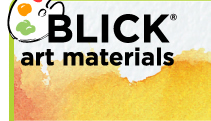| The selling of art from museum collections can be controversial. In 2009, for example, Brandeis University announced that it would close the Rose Art Museum, sell the collection, and use the proceeds to compensate for the school’s budgetary shortfall. A legal and public relations nightmare ensued. Why? The American Association of Museums (AAM) stipulates that art should be sold only to buy works that are of higher quality or more appropriate to an institution’s mission. Selling art to pay for operating expenses is considered gross mismanagement, a slippery slope that jeopardizes the ongoing viability of the collection as well as our broader cultural legacy. But when handled properly, deaccessioning (the process of formally transferring ownership of an object through sale, exchange, or donation) is not wrong; in fact, it’s part of a museum’s mission, and refining a collection is intrinsic to a curator’s role. There is no reason for works to sit in institutional basements when they could be enjoyed by others. At Carnegie Museum of Art, the deaccessioning process is governed by a well-defined protocol. After carefully studying an object, we make every effort to consult with the donor or their heirs before selling it. We use funds from the sale to acquire art related to the piece we deaccessioned, and the original donor is credited as the donor of the new work(s). In January, the museum deaccessioned five paintings by the 18th-century British artist George Romney, which curators since the 1930s had judged to be inadequate for public display. A work that is not “museum quality” may be inferior to the best of an artist’s production or it may have had been badly damaged and restored to the point where little of the original is left. Lulu Lippincott, head of the museum’s department of fine arts, in consultation with an outside Romney specialist, concluded that the paintings in question were undistinguished portraits that Romney churned out to pay the rent. Some of them had been overpainted by others and/or cut down from their original size. Happily, the museum has an excellent Romney portrait that is always on view, and we are currently in the market for a great Romney drawing to which we will apply the proceeds from the sale of the paintings. Deaccessioning can also yield unexpected results. A work in our collection, purported to be by the 16th-century Florentine artist known as Bronzino, had all the hallmarks of a fake. In looking over the painting, however, Lulu noted a stamp on the stretcher that was from the studio of a 19th-century English restorer known for removing old paintings from their wooden panels and attaching them to canvas. Often someone would render the old work more saleable by repainting it in a style suited to the tastes of the time. Suspicious that this might be the case with our “Bronzino,” Lulu and our head conservator Ellen Baxter had the canvas X-rayed, revealing that there was, indeed, another painting beneath its surface. Ellen has begun carefully removing layers of varnish and paint to expose a different position for the hand, a changed hairstyle, and a face decidedly less pretty but more authentic than the 19th-century version. She and Lulu think they may be uncovering a portrait of Isabella de’ Medici, possibly by the 16th-century painter Alessandro Allori; it is an exciting process to watch. If the museum had not examined this work as part of the deaccessioning procedure, the true 16th-century portrait would have remained lost to history. In the months and years ahead, we will continue to deaccession works deliberately and thoughtfully and to share information about the process with you. Until next month, 
Lynn Zelevansky
The Henry J. Heinz II Director
Carnegie Museum of Art
|
























